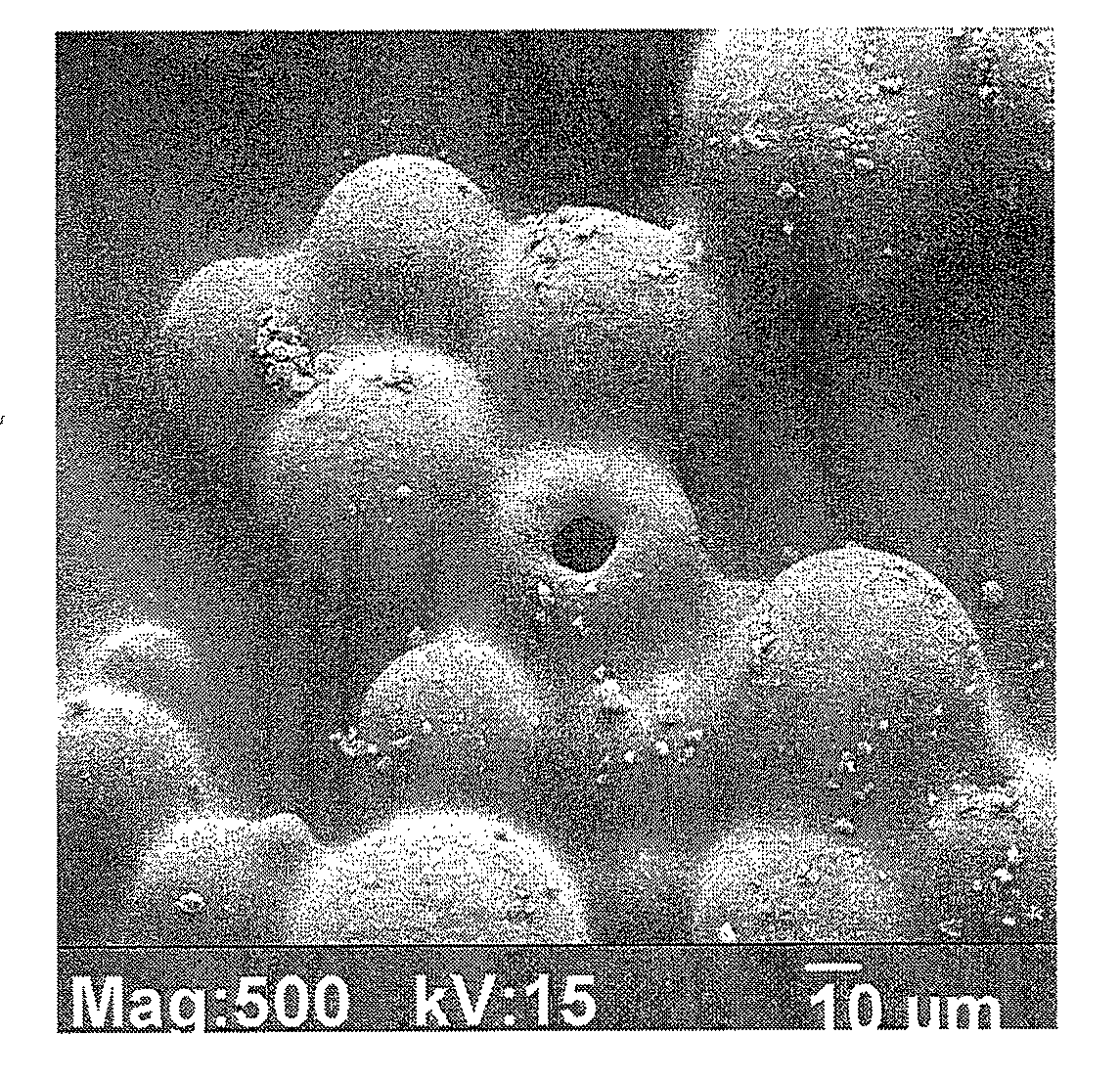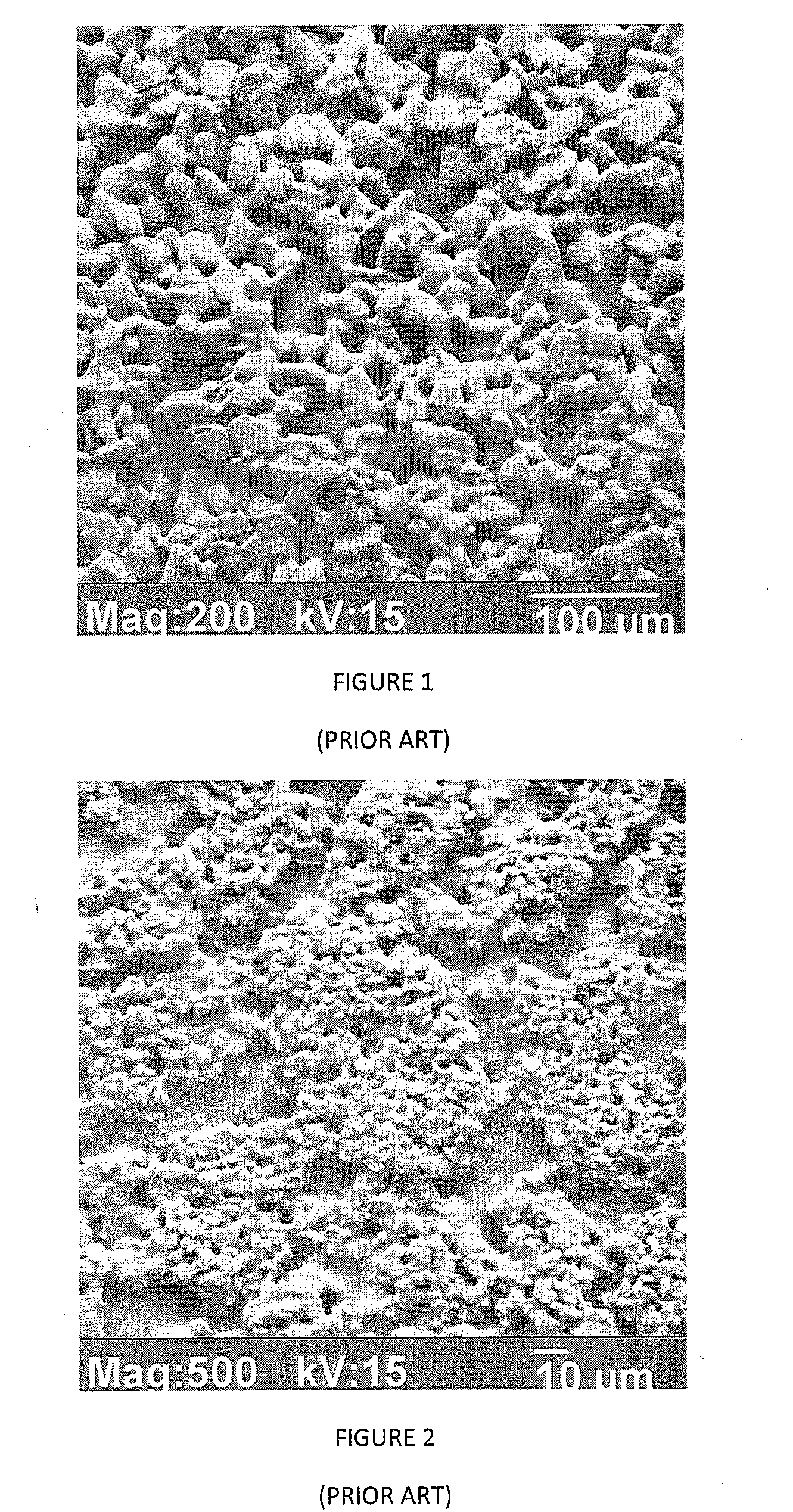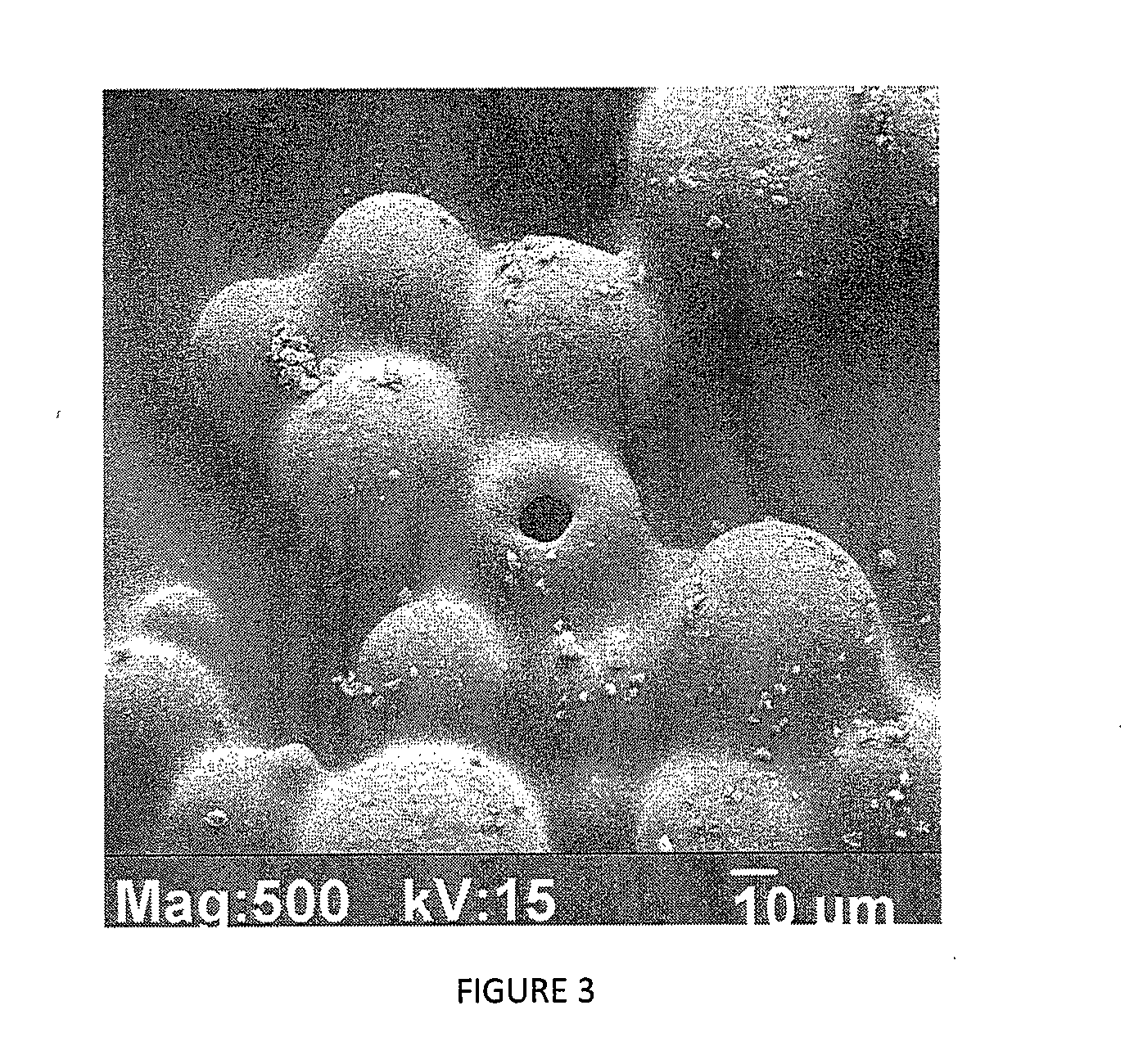Dental polishing devices and method of polishing dental surfaces
a dental surface and polishing technology, applied in dental tools, dental surgery, other chemical processes, etc., can solve the problems of reducing the subsequent chance of food debris and plaque trapping, cracking of the restoration, and/or debonding from its surroundings, so as to achieve high gloss luster and equal applicability
- Summary
- Abstract
- Description
- Claims
- Application Information
AI Technical Summary
Benefits of technology
Problems solved by technology
Method used
Image
Examples
Embodiment Construction
[0021]There is provided according to the present disclosure, a two-step system and method that unexpectedly achieves the finishing and polishing of a surface, particularly a dental surface in a manner that is at least comparable to the conventional four-step methods and systems known in the art. It has been unexpectedly found that when spherical-shaped particle aggregates, such as those shown in FIG. 3 (which is an image taken with a scanning electron microscope (SEM) and magnified 500 times normal), particularly particles of nano-size are employed, a two-step finishing and polishing system can be achieved that results in a final surface equal or superior to those surfaces achieved by conventional four-step systems of the known art.
[0022]According to the present disclosure, a two-step method is provided for achieving the finishing and polishing of a surface, particularly a dental surface. As described above, a two-step method or two-part system is a great improvement over the conven...
PUM
| Property | Measurement | Unit |
|---|---|---|
| particle size | aaaaa | aaaaa |
| thickness | aaaaa | aaaaa |
| temperature | aaaaa | aaaaa |
Abstract
Description
Claims
Application Information
 Login to View More
Login to View More - Generate Ideas
- Intellectual Property
- Life Sciences
- Materials
- Tech Scout
- Unparalleled Data Quality
- Higher Quality Content
- 60% Fewer Hallucinations
Browse by: Latest US Patents, China's latest patents, Technical Efficacy Thesaurus, Application Domain, Technology Topic, Popular Technical Reports.
© 2025 PatSnap. All rights reserved.Legal|Privacy policy|Modern Slavery Act Transparency Statement|Sitemap|About US| Contact US: help@patsnap.com



